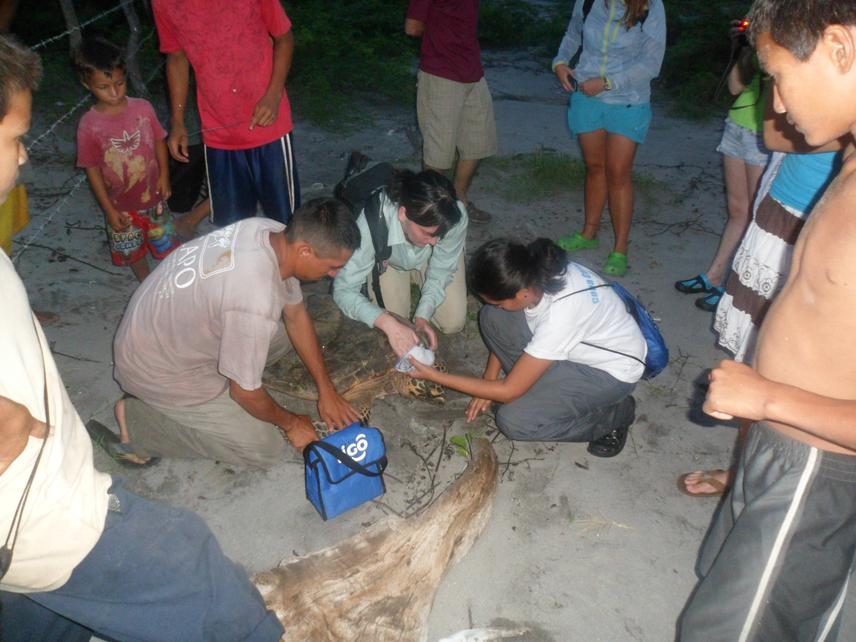Michael Joseph Liles
Other projects
14 Mar 2011
Enhancing Nest Protection of the Critically Endangered Hawksbill Turtle in the Bahía de Jiquilisco-Xiriualtique Biosphere Reserve, El Salvador
Our project aims to establish baseline blood chemistry values and heavy metal concentrations in nesting hawksbills to guide the mitigation of health related threats in the eastern Pacific Ocean.

Training local students and members of Local Hawksbill Conservation Network on how to take blood samples
Hawksbill sea turtles (Eretmochelys imbricata) are critically endangered globally and hawksbills in the eastern Pacific Ocean (Mexico-Peru) are among the most endangered populations of sea turtles in the world. Fewer than 500 adult female hawksbills exist in the region (Gaos et al. 2010), of which >40% nest in the Bahía de Jiquilisco-Xiriualtique Biosphere Reserve (Bahía) in El Salvador (Altamirano et al. 2011, Liles et al. 2011). Hawksbills are a keystone species and are highly sensitive to their environment, making them excellent environmental indicators. In light of environmental and climate changes, this species is increasingly threatened by pollution and degradation of marine habitats.
Baseline values of blood chemistry and heavy metal concentrations in sea turtles are important for providing an indication of the overall health of a wild population, for measuring the health of a population over time, for comparing the health of populations, and for use as prognostic indicators for individual health assessments (Deem et al. 2009). However, no data are available on health parameters of hawksbills in the eastern Pacific Ocean, making it difficult to identify and mitigate health related threats to this population of sea turtles. To address this, we will determine the baseline blood chemistry profiles and heavy metal concentrations of a minimum of 20 nesting hawksbills in the Bahía, which will serve as an invaluable tool for guiding management and conservation efforts. Concurrently, we will strengthen the technical capacity of local students via participatory research. Little research on wildlife populations is conducted by biology and veterinary students at the University of El Salvador.
We will use this opportunity to train and incorporate a minimum of nine students into all aspects of project activities. With support from project personnel, they will participate directly in field work, data analysis, and presentation of results. By strengthening the technical capacity of students, we will provide them with the skills necessary to become local leaders in wildlife research and conservation in El Salvador. Our long-term goal is to use this project as a stepping-stone toward the creation of a Central American sea turtle health monitoring network pioneered by local leaders.